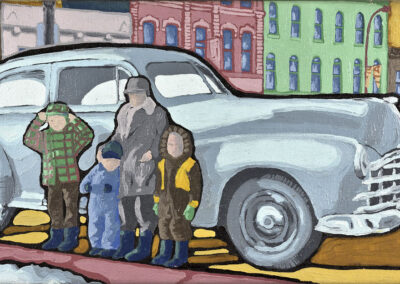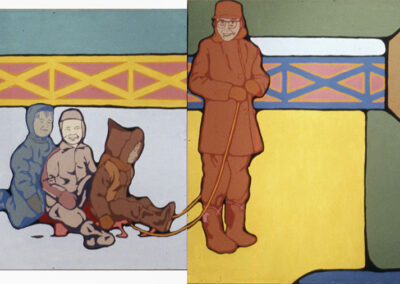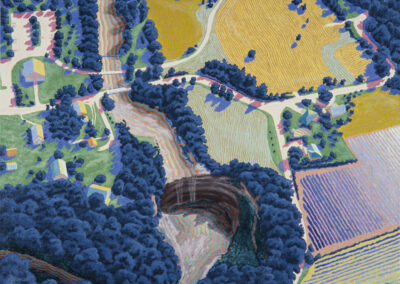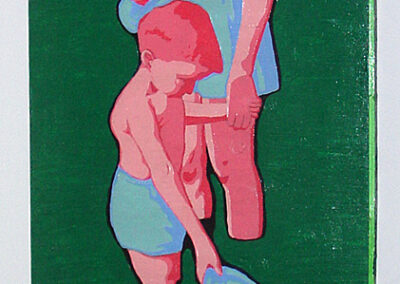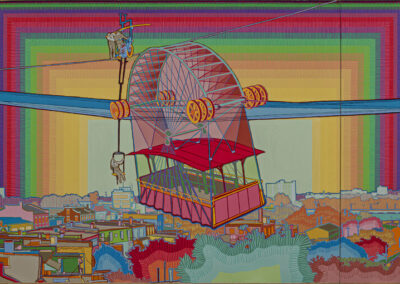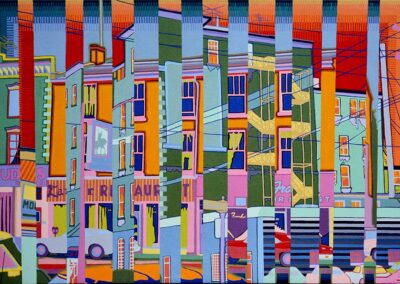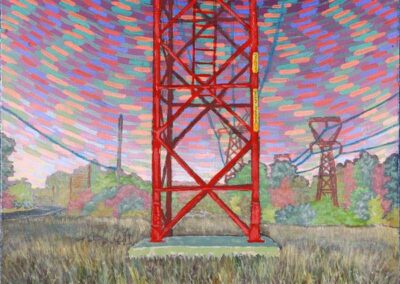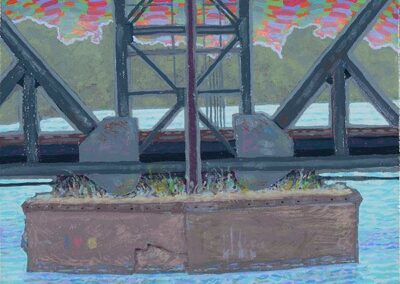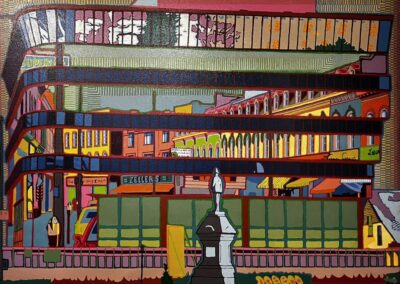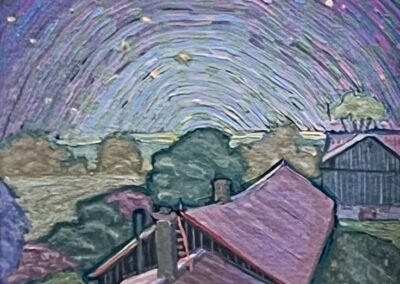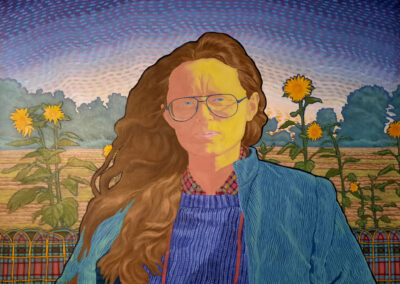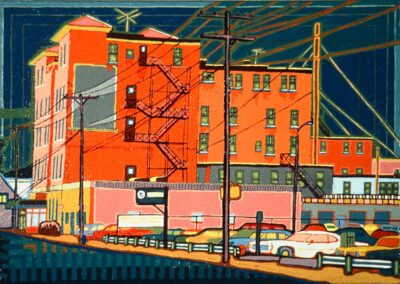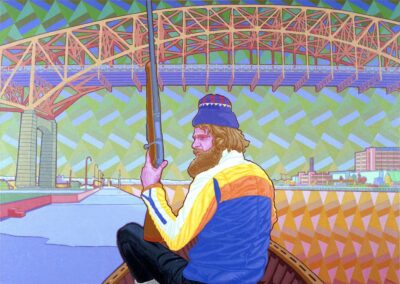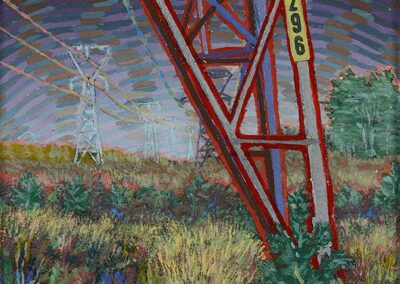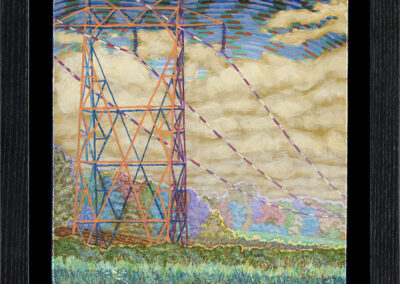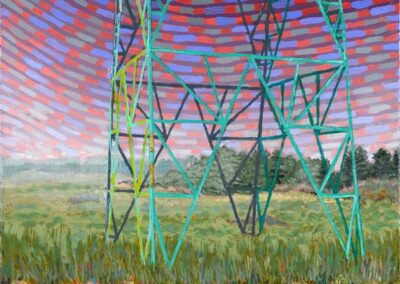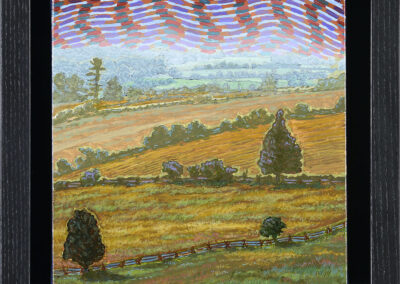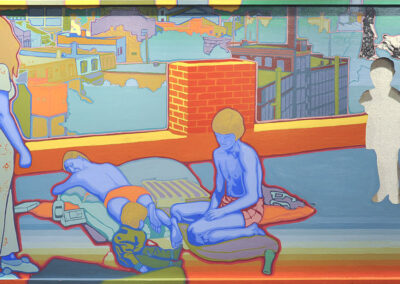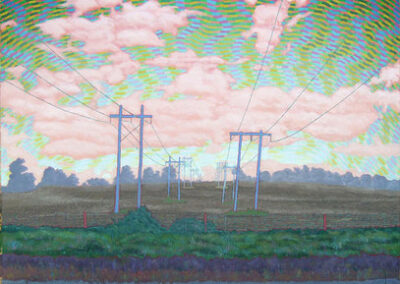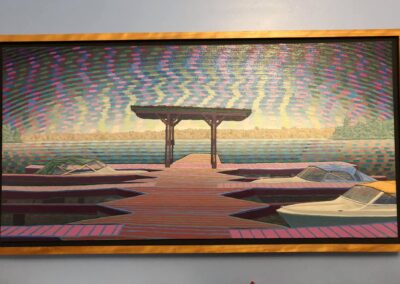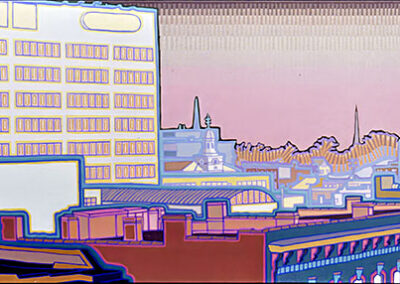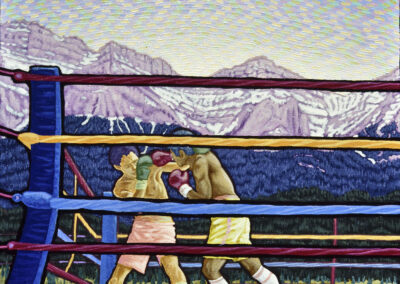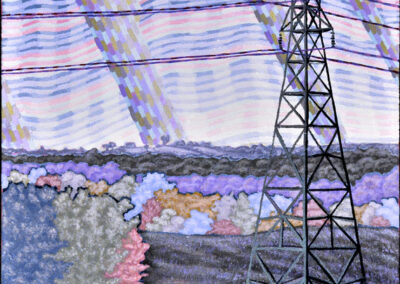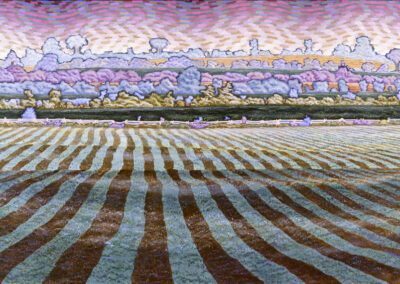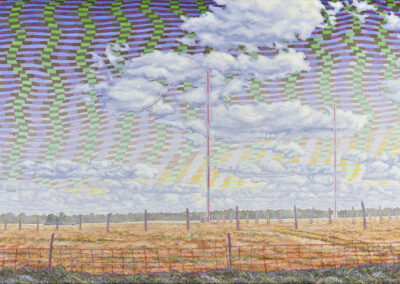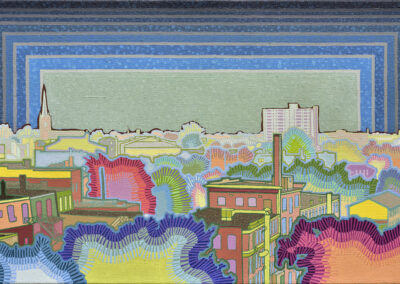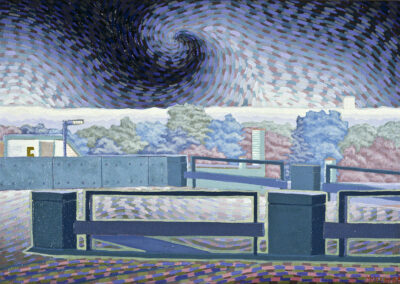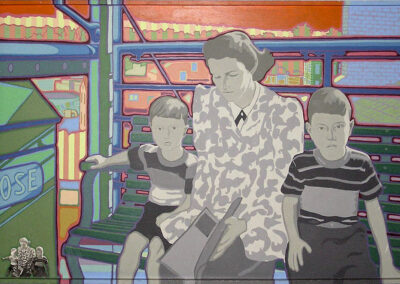Our next Artist You Need To Know is John Moffat.
Moffat’s paintings of people and landscapes are both charming and vibrant depictions of his immediate world, as well as delving into the history of the area. A self taught artist, Moffat knew when he finished high school that he wanted to be an artist, but eschewed the traditional approach of art school as “I didn’t want my ideas to get muddled.”
“I have a strong attachment to the landscape. I have generally used what is around me as inspiration for my paintings. Most subject matter in my art can be found within walking distance of where I Iive….when I take these long drives I watch out for favourite trees and I take stock of their condition since most of them have to survive next to busy highways.”
John Moffat was born in Inverness, Scotland and his family emigrated to Canada in 1948. He “spent his formative years in the valleys and alleys of Merritton and St. Catharines rummaging through old buildings and factories, looking for salvage and treasures. His early explorations through abandoned industrial sites piqued his interest in capturing the essence of the forgotten or overlooked beauty he saw in those surroundings. A founding member of Niagara Artists Centre, Moffat volunteered extensively with the group (working with John Boyle and several other NAC alumni” to help build one of the primary touchstones of the Niagara – and wider Canadian – visual arts community. (from here)
His work is strongly influenced by Impressionism as well as the Group of Seven. In an early review of an exhibition Moffat participated in, the influential and significant critic and curator Barry Lord described Moffat’s work as ‘execute with the confidence implicit in the regionalist attitude, they depict people and situations in Moffat’s life. Not surprisingly, their bold outlines and bright colours recall [Greg] Curnoe‘s earliest paintings….”
Moffat has exhibited his work at Cram International (St. Catharines, ON), Gallerie Intersection (Ottawa, ON), Niagara Artists’ Centre (St. Catharines, ON), Mackenzie Gallery at Trent University (Peterborough, ON), Nancy Poole’s Studio (Toronto, ON), Rodman Hall Arts Centre (St. Catharines, ON), Forest City Gallery (London, ON), Brock University Gallery (Brock University, St. Catharines, ON), Gallery 101 (Ottawa, ON), Artspace (Peterborough, ON) and many other places.
In speaking about his work, Moffat states that when he “lived in downtown St. Catharines…most of my paintings were of the surrounding cityscape. These works brought together the interests I had in history, urban culture and science. My images juxtaposed the old with the new and placed them under a pulsating sky. I likened that to peeling away the colloidal effect of the atmosphere revealing the ionospheres dance with the earth – present, but invisible to us.”
The sites within which Moffat lives help form and foment his paintings : “When I moved to an old farmhouse in Cavan township near Peterborough, all the patterns of history and human settlement that had been clear in the city was subtler in the country. It took me a couple of years to interpret what I saw and translate it into my paintings.
A hydro pylon corridor that ran through the back of the farm became the center of my interest for a large number of my works. These large, almost invisible, modern-day totems connect all of us but alienate us from each other….Also being in the countryside allowed me to follow the patterns of plowing and planting the crops so that over the six years on the farm the landscape was constantly changing. I never got tired of painting my “own backyard”.
My next move was to Ottawa where I continued my interest of the altered landscape. Perth Ontario is now my home, but the images that interest me now are gleaned from my travels. My “backyard” has gotten larger. I am still interpreting the patterns of landscape molded by human industry, economy, carelessness and neglect…In my paintings it is a better world.”
His work can be found in a number of collections both public and private. These include of Arc Industries (St. Catharines, ON), Canada Council Art Bank (Ottawa, ON), Brock University (St. Catharines, ON), Canada Trust, City of Ottawa – Carleton (Ottawa, ON), Carleton University (Ottawa, ON), Department of Global Affairs (Ottawa, ON), Lincoln County Board of Education (St. Catharines, ON), Rodman Art Institute of Niagara, the St. Catharines Provincial Court House and Land Registry Office (St. Catharines, ON) and numerous private collections. Notably, Moffat also had one of his works used for the cover of internationally acclaimed author Carol Shields book Coming to Canada. He has commented that he sees a synchronicity in this, as both he and Shields are immigrants to Canada. He has been awarded grants from both the Ontario Arts Council and the Canada Council for the Arts.
Moffat has also been an Art technician with the Canada Council ARTBANK and the Ottawa Art Gallery as well as a Program Officer / Photographer, Visual Art Program with Global Affairs Canada.
John Moffat lives and works in Perth, ON. About his work, Moffat has stated that “pretty much everything I have painted has a story” and in this way they act as both a personal narrative but also a larger social history.



